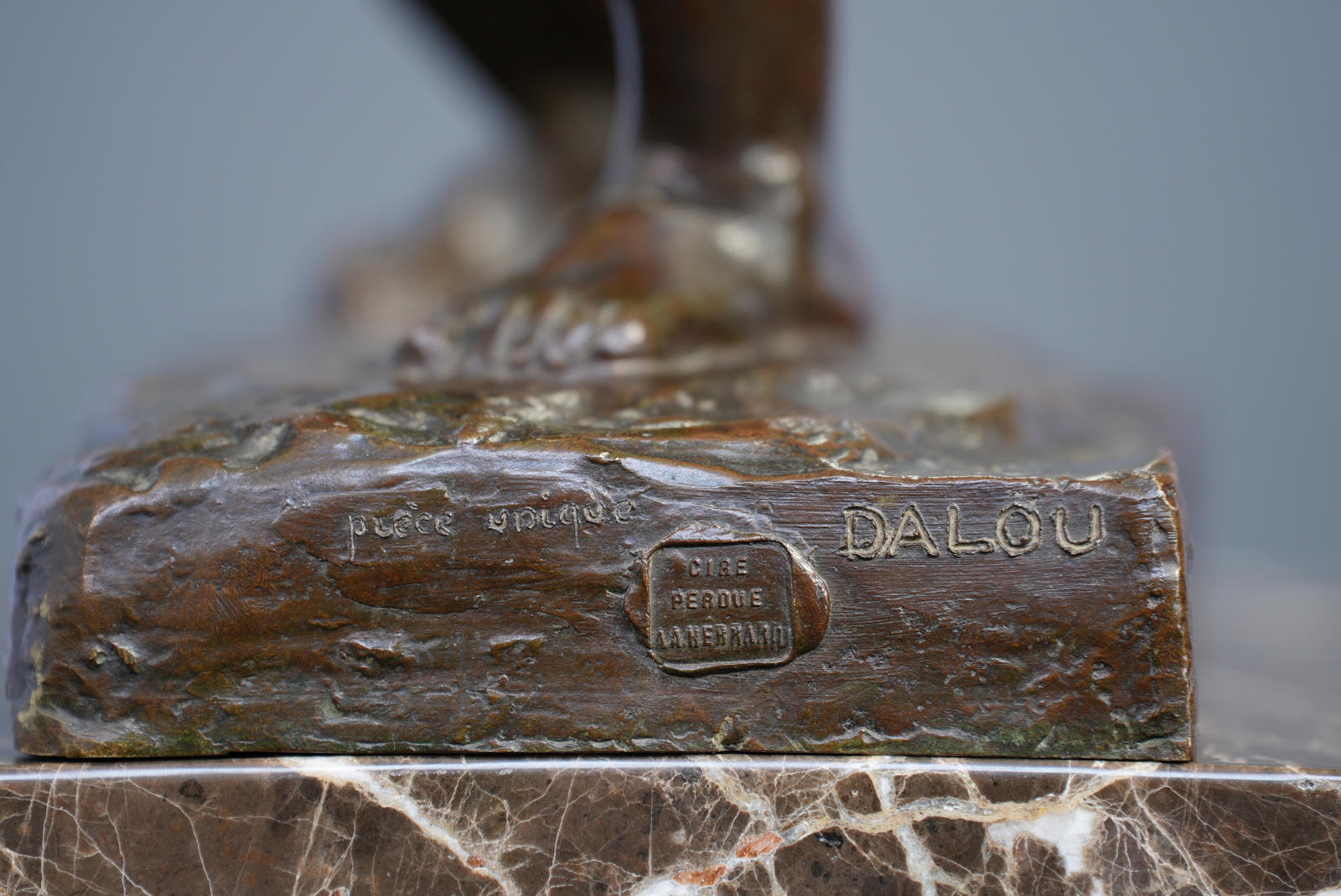artist
Aime Jules Dalou was one of the most prolific and successful monument makers in France during the last two decades of the nineteenth century. Dalou received his first commission for a public monument for the Royal Exchange in London having been forced into exile to England because of his left-wing political views. This commission was a major turning point in the artist's career. When he returned to Paris after the amnesty of 1879-80, only monuments celebrating the greatest men of ideals of his era could completely satisfy him. In Paris during the 1890s, a number of Dalou's monuments were erected and inaugurated to commemorate distinguished individuals. Each of these individuals was someone with whom Dalou felt a particular artistic, social, or political affinity.
Adrien A. Hebrard (c. 1865-1937), fondeur, devoted much of his life to promoting sculpture and the craft of bronze casting. He was especially committed to the preservation of works left uncast by artists at the time of their death. Without Hebrard's intervention much of the work of Jules Dalou would have remained unknown. Three years after Dalou's death, the Petit Palais acquired a great number of small terracotta and plaster models. Two years later, in 1907, Hebrard was given authorization to cast the works in bronze.
Description
Dalou’s Triumph of the Republic in the Place de la Nation was by far his largest commissioned work, a vast multi-figure construction eleven meters high and requiring a record 42 tons of bronze. On 29th April 1879 the city of Paris announced a competition for a monument to symbolize the strength and utopian dream of the Third Republic. Dalou heard about the competition while still in exile in England following the Commune but knowing that his pardon was shortly to be granted, he returned to Paris and submitted a plaster sketch. (The earliest representation of this is the terracotta model in the Ashmolean Museum, see Hunisak, fig. 105F).
Dalou paid scant attention to the competition’s brief and submitted a clear vision of his concept which portrayed his own political dreams. The central female figure of La Republique, wearing a Phrygian cap, is standing in a chariot dragged by powerful lions to symbolize the ‘force of the people’, only ridden by the Genius of Liberty. Other allegorical figures help drag the chariot forward, Justice, Peace and Labour, each accompanied by Clodion-like children who tussle with attributes such as scales, flowers, fruit and vegetables.
Dalou’s personification of Labour is the most contemporary, didactic of the allegories, defining the nobility of the artisan in the form of an industrial worker in leather apron and sabers. Behind, Labour his ‘child’, from whom the present bronze is taken, standing beside a giant gear. He is bent over from the weight of his cloth-wrapped bundle which contains the tools of the artist: brushes, chisel, calipers, and a ruler. For Dalou, who believed that ‘we are artisans before we a re artists’ this was his most personal allegory, ‘a hidden celebration of the artist-worker’ (Hunisak p.222).
Although Dalou did not win the competition, there was an outcry from certain critics and committee members that t the work should nonetheless be commissioned but for a different location. The conseil municipal finally agreed that Dalou’s glorification of the Third Republic gave Paris a second monument from the same competition which was inaugurated in a pompous ceremony (dubbed by one critic The Triumph of Dalou) on 25th November 1899 in the Place de la Nation.
The inscription on this Hébrard cast, pièce unique, is very rare and appears to denote the one and only cast of a model in this size, rather than being part of an edition. Other examples known are Femme lisant dans un fauteuil (Musee d’Orsay, see cat. Sommaire p. 106, RF 1723), A Silenus and Allegorie de la Justice, both exhibited at the Galerie Heim, Paris in 1965, (see below cat. Nos. 16 and 23 respectively). Significantly, all three were taken from plasters, which along with the small terracotta models, were acquired by the Petit-Palais after his death, in 1905. Another pièce unique, a baby boy, was sold at Sotheby’s London on 20th June 1989 as lot 81 for £12,000.
The Hébrard foundry was instrumental in bringing to light many of Dalou’s unknown models which the sculptor considered merely as a part of the working process, many of which were destroyed. In 1907, Hérbrard obtained permission to cast a number of these models, which ere normally in editions of ten. However, a very few, like the present bronze, were inscribed pièce unique.
It is not possible to be precise about the date of this cast. However, proceeds from Hébrard’s casts went to the Orphelinat des Arts where Dalou’s daughter Georgette lived until her death in 1915. So while a date from 1907 and 1915 seem likely, it has been suggested that Hébrard went on collecting models from the Petit Palais, thus continuing to benefit the orphanage. The practice would have presumably ceased before the founder’s death in 1937 and subsequent closure of business.
provenance
literature
Ciechanowiecki, cat. 11, 16 and 17; Hunisak, p. 207-229, and figs. 105a-105W; Homage to A.A. Hébrard, see introduction.


























